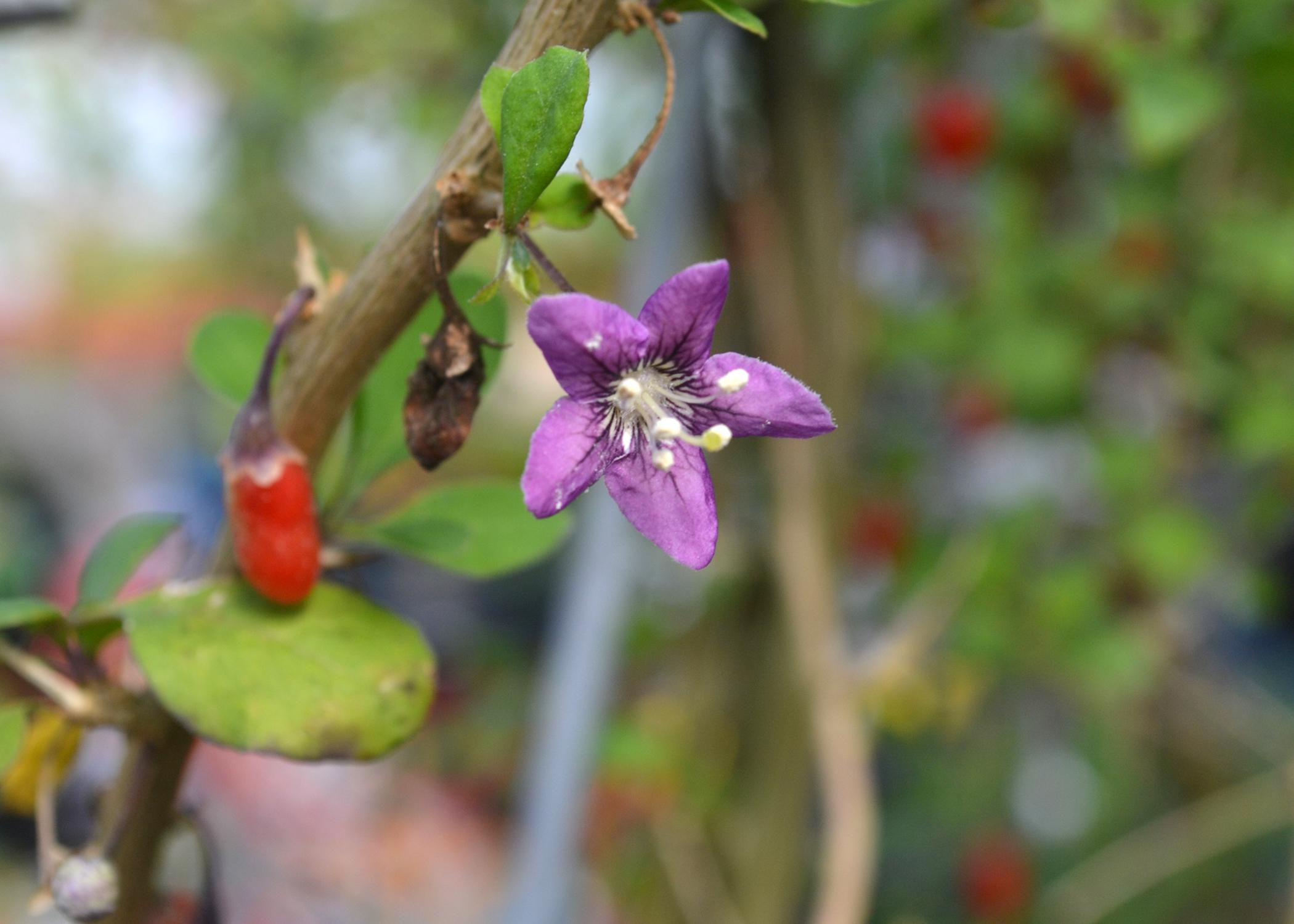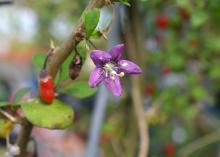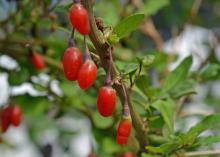Grow goji berry plants for fruit, flowers, looks
I am always on the lookout for plants that produce nutritious fruits and berries, and during a recent visit to a local nursery, I was drawn to some goji berry plants.
These fascinating plants are native to Asia. They have been cultivated for centuries for their highly nutritious fruit and medicinal properties. Their ability to thrive in a variety of conditions makes them an excellent addition to gardens, offering ornamental beauty and a bountiful harvest.
Growing as a sprawling, arching shrub, the goji berry plant matures to 6-10 feet tall and wide, forming a graceful, fountain-like shape. Its long, flexible branches are sometimes thorny and adorned with soft, lance-shaped gray-green leaves.
In late spring to early summer, clusters of small, bell-shaped purple flowers appear, attracting pollinators like bees and butterflies. These blossoms give way to small, oblong berries that ripen from green to a brilliant red orange.
Their glossy, thin skin encases a soft, juicy interior fruit. Goji berries have a unique flavor that blends sweetness, tartness and subtle earthy notes.
Goji berries thrive in U.S. Department of Agriculture hardiness zones 5-9, making them ideal for Mississippi. This plant is incredibly resilient, tolerating both heat and drought once established. It prefers full sun for maximum fruit production, but it can adapt to light shade.
I recommend planting in well-draining soil with a slightly alkaline to neutral pH of 6.5-7.0. It grows well in sandy, loamy or slightly clay-heavy soils.
Before planting, choose a sunny location with good air circulation to promote healthy growth and minimize disease risks. If the soil is compacted, amend with compost or sand to improve drainage.
Young plants require regular watering to establish strong roots. Once mature, they are quite drought-tolerant. Water deeply but allow the soil to dry slightly between waterings to prevent root rot.
Feed your plant with a balanced fertilizer in early spring to encourage vigorous growth and fruiting. Its nutritional needs are similar to that of tomatoes.
Since goji berries produce fruit on new wood, I recommend pruning in late winter or early spring to remove weak or dead growth and encourage better fruiting. Goji berry plants begin flowering in late spring to early summer, and the fruit ripens from late summer to early fall. Harvest by hand to avoid bruising the delicate berries.
I enjoy eating the berries fresh at peak ripeness, but they are also excellent dried. This concentrates their natural sweetness and extends their shelf life.
With its graceful arching habit, brilliant flowers and nutrient-rich fruit, the goji berry plant makes a productive and ornamental addition to the garden. Grow yours as a landscape shrub, train it on a trellis or keep it in a container.
However it is used, the goji berry plant provides a rewarding harvest while adding beauty to your outdoor space.





